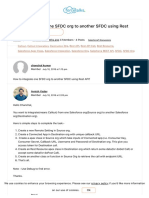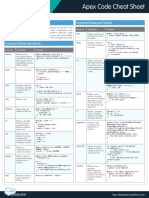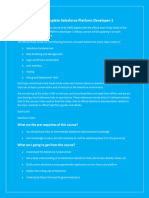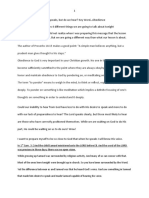0% found this document useful (0 votes)
173 views3 pagesSalesforce Developer Syallabus
The Salesforce Developer Syllabus outlines a 40-hour training program focusing on key topics such as custom objects, Apex programming, SOQL queries, DML operations, triggers, and Lightning components. It includes preparation for Salesforce Certified Platform Developer I and II certifications, with a detailed curriculum covering essential skills and best practices. The syllabus emphasizes practical application through hands-on exercises and testing strategies to ensure effective learning and implementation.
Uploaded by
Anupam Gourav PatraCopyright
© © All Rights Reserved
We take content rights seriously. If you suspect this is your content, claim it here.
Available Formats
Download as PDF, TXT or read online on Scribd
0% found this document useful (0 votes)
173 views3 pagesSalesforce Developer Syallabus
The Salesforce Developer Syllabus outlines a 40-hour training program focusing on key topics such as custom objects, Apex programming, SOQL queries, DML operations, triggers, and Lightning components. It includes preparation for Salesforce Certified Platform Developer I and II certifications, with a detailed curriculum covering essential skills and best practices. The syllabus emphasizes practical application through hands-on exercises and testing strategies to ensure effective learning and implementation.
Uploaded by
Anupam Gourav PatraCopyright
© © All Rights Reserved
We take content rights seriously. If you suspect this is your content, claim it here.
Available Formats
Download as PDF, TXT or read online on Scribd
/ 3

























































































